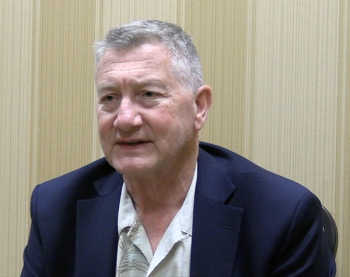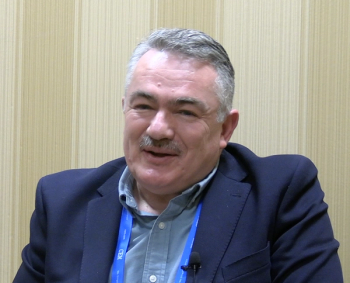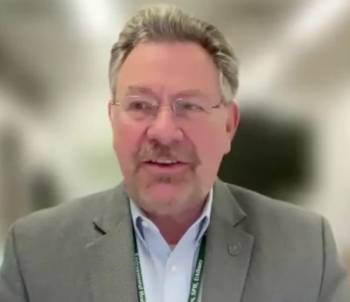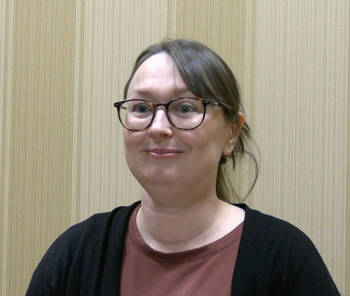
- March 2024
- Volume 39
- Issue 03
- Pages: 30–34
Clara Craver: An Icon of Vibrational Spectroscopy
As one of the first renowned women spectroscopists, Craver broke down barriers in the field and is recognized for her work compiling reference libraries of spectra that set the foundation for modern infrared (IR) spectroscopy.
When Stephen Smith brought his wife home to meet his mother, Clara Craver, the first thing she noticed was the décor. Craver’s house was adorned with reproductions of paintings by Vincent van Gogh and Claude Monet. The music of Rachmaninoff or Tchaikovsky often filled the air.
“I recall when my wife, then fiancé, looked around and said, ‘Gee, this is all very interesting, what’s the unifying principle?’” Smith recalled in an interview with Spectroscopy.
“Well, it’s me, dear,” Craver replied. “These are all things I like.”
Craver’s home in Evansville, Indiana, is perhaps an appropriate setting to begin a story about her work in vibrational spectroscopy. In addition to the collections of items that Craver had amassed throughout her life, the basement of her Evansville home also served as a laboratory where she would work. Craver eventually moved her family to a farmhouse in New Jersey, and later to St. Louis, Missouri, where she upgraded her laboratory to an entire garage.
“She kept it fairly small intentionally,” Smith said. “She wanted to make sure that she knew everything that happened. She didn't want her name associated with anything sub-standard."
It is this tireless drive for excellence that makes Craver a trailblazer in the field of spectroscopy—as a result, she is among the first that Spectroscopy is profiling for the “Icons of Spectroscopy” Laureate Series. Craver, who died in 2019, was an expert in the analysis of the chemical properties of polymers, plastics, asphalt, oils, coatings, and adhesives (1). Craver was also the editor of the Coblentz reference desk and other libraries that would later become databases of infrared (IR) spectra (2). Today, these libraries are widely recognized as the foundation for the application of modern IR spectroscopy.
Craver lectured at conferences on the interpretation of spectra and regularly provided expert testimony for lawsuits. As an industrial spectroscopist that worked for a variety of companies and founded her own analytical laboratory, Craver’s dedication and commitment to the advancement of the field cannot be overstated.
Setting the Foundation
Today, Craver's work is recognized as having set the groundwork for much of modern IR spectroscopy. Perhaps one of her most notably contributions is her work on the Desk Book of Infrared Spectra, which makes spectra from private laboratories available for public use (3). Craver was the editor of the reference desk at the Coblentz Society, where she worked on compiling these spectra.
The desk book is a combination of spectra from dozens of spectroscopists working in industry, academia, and government laboratories. The book contains a large percentage of solution spectra, and some compounds are represented by spectra obtained for more than one physical state (3). It also includes guidelines to the interpretation of some major chemical classes.
Craver began her career in analytical chemistry at The Ohio State University, graduating with a bachelor’s in chemistry in 1945 (1). She worked as a teaching assistant during undergraduate years to pay for school.
Her first job after graduating from college was at Eastern States Standard Oil of New Jersey, which is now ExxonMobil. She also held a position at Batelle, an independent nonprofit focused on advancing science and technology. Craver eventually decided to start her own analytical laboratory, Chemir Labs, which specialized in applied IR spectroscopy.
Craver developed an early reputation for being an expert in the then new science of industrial IR spectroscopy. According to Jeanette Grasselli Brown, another early pioneer in IR spectroscopy, Craver “was the person we all went to for our infrared reference spectra” (4). In the early days of recording spectra using single beam instruments, one had to measure the sample spectrum and background spectrum (called the noise spectrum at the time) separately, and then subtract the background spectrum. All measurements had to be carefully made to achieve accurate and reliable spectra; Craver was a perfectionist at this. The basic use of IR spectroscopy absolutely required a comparison set of accurate reference IR spectra, and that is where her contributions stand out. Craver collaborated with the Coblentz Society to make a set of IR reference spectra widely available.
Craver published a detailed written description of her method for IR spectral interpretation from an interview discussion that included applying computer searching techniques for spectral interpretation (5). The Craver interview was conducted by Jerome Workman, in a series of conversations over several years, beginning in 2000, and finishing in 2015. The basics and advanced principles of her methods for IR spectral interpretation are explained by Craver in this publication.
Her work took her to locations near and far. In 1962, she traveled to Buenos Aires, Argentina, with fellow spectroscopist Norman B. Colthup. Both Colthup and Craver were experts on IR group frequencies, also known as fingerprint frequencies, for the identification of many materials for both industrial and forensic applications. These two individuals were well known for interpretation of IR spectra for many applications, and their expertise was sought by instrumentation companies, industrial material manufacturers, and other laboratories internationally.
Smith recalled a revolving door of scientists visiting the home laboratory to collaborate with Craver and her team. Bryce Crawford, a renowned professor of chemistry and scientist, taught Smith and his siblings about light absorption. W. J. Potts from the Dow Chemical Company would come over to work with Craver and play boogie-woogie piano during their down time.
"We met a lot of very interesting people along the way," Smith said.
In 1974, Craver was awarded an honorary doctorate from Fisk University. She was also one of the first women admitted to the Chemical Club of New York. Craver and her husband J. Kenneth Craver, a Monsanto chemist, were part of the first husband-and-wife team to chair separate divisions of the American Chemical Society (1).
Craver regularly served as an expert witness on patent lawsuits. Much of her patent work focused on failure analysis of adhesives, Smith said. In 1985, Craver was awarded the Williams-Wright Award, a recognition that is presented annually to an industrial spectroscopist who has made contributions to vibrational spectroscopy while working in industry.
"She was a very humble person," said André Sommer, professor Emeritus at Miami University, who knew Craver. “She earned everything she got.”
Shattering the Glass Ceiling
Like most women, Craver is no stranger to gender discrimination. When she entered the workforce in the 1940s, women were not openly welcomed as peers to their male colleagues in the office or in the laboratory. Even today, only approximately 40% of chemical and material science jobs are held by women, according to data from the Bureau of Labor Statistics (6).
In one of her first jobs, Craver recalled being asked if she could type. “No,” she responded, quickly realizing that if she agreed, she would spend most of her time typing up work from others, instead of focusing on her own projects (1).
When Craver began her laboratory consulting business, her husband had to sign on her business checking account for the laboratory because she was married, and the bank would not allow her to open an account in her own name.
Craver had no problem speaking out against this kind of discrimination. In 1966, for instance, when she was denied a seat on an executive flight meant only for men, she wrote a letter to United Airlines. The Civil Rights Act had been passed two years prior in 1964, Craver pointed out, and the practice of denying women a seat on the plane was illegal. “Would you please let me know the basis on which I am just been denied a reservation on that flight,” she wrote (1).
Although Craver faced challenges as a woman pioneering her field, it never shattered her confidence. In an interview for the Women in Chemistry Oral History Collection at Iowa State University, Craver was asked if she was particularly good at chemistry in high school (7). After pausing for a moment to think, she responded: “I was particularly good at everything.”
A Lasting Impact
The sale of the desk books that Craver and her colleagues worked on helped to support the Coblentz Society. In 2006, the society began presenting an award in Craver's honor to recognize a young professional spectroscopist who has made a significant contribution to applied vibrational spectroscopy.
Katherine Bakeev, who specializes in near-infrared (NIR), Fourier transform infrared (FT-IR), ultraviolet-visible (UV-vis), and Raman spectroscopy, won the Craver Award in 2007. Bakeev, who was working at GlaxoSmith-Kline at the time, remembers calling Craver after she received her award to thank her. “Winning the Craver Award was a great honor,” she said.
Craver’s professional impact on the field of spectroscopy is undeniably easy to see. However, behind the scenes, colleagues remember her as a great friend who cared deeply for the tight-knit spectroscopy community. For Sommer, Craver was family, someone to dance with at conferences and play lively games of Crazy Eights.
"I would take my computer and I’d pull up a spectrum that was probably mixtures, and I would ask her to try and interpret the spectra, which she was very good at,” he recalled.
It’s clear that Craver shared these fond feelings toward her colleagues. During an interview, Craver was asked about the most rewarding part of her career (7). It’s the people, she said, that make up the tight-knit spectroscopy community.
“The most rewarding part has been the colleagues I’ve had and still have,” she said. “I have people that I have known for 50 years now that I see at meetings, go to talk about current research with, or go out to dinner and a group or do things with. And they know me better than my family ever did. We know each other. So, I say the most rewarding thing is the working with other people with good minds and good interests.”
References
(1) Clara Craver: A Pioneer Female Spectroscopist. Presented at the SciX conference, in Palm Springs, California on October 17, 2019.
(2) The Craver Award.
(3) Craver, C. D.; System, N. S. R. D. The Coblentz Society Desk Book of Infrared Spectra.
(4) Interview with Jeanette Grasselli Brown in honor of Clara Craver’s career. Luisa T. M. Profeta, 2020, personal communication.
(5) Workman, J. The Concise Handbook of Analytical Spectroscopy, Volume 4, Infrared Spectral Searching for Identification and Qualitative Analysis. Computer Searching of Infrared Spectra (from personal interview with Clara D. Craver, D.Sc.), World Scientific Publishing, 2016, Section 6.4, 24–54.
(6) The Stem Gap: Women and Girls in Science, Technology, Engineering and Mathematics.
(7) Interview with Clara D. Craver. Women in Chemistry Oral History Project, MS 0650, Iowa State University Library Special Collections and University Archives.
About the Author
Caroline Hroncich is the Associate Editorial Director for Spectroscopy. Direct correspondence to:
Articles in this issue
almost 2 years ago
What’s New in ICP-MS for Environmental Analysis?almost 2 years ago
Inorganics III: Even More Spectra, and the Grand FinaleNewsletter
Get essential updates on the latest spectroscopy technologies, regulatory standards, and best practices—subscribe today to Spectroscopy.




